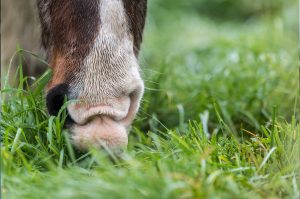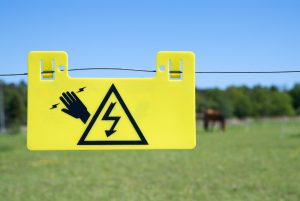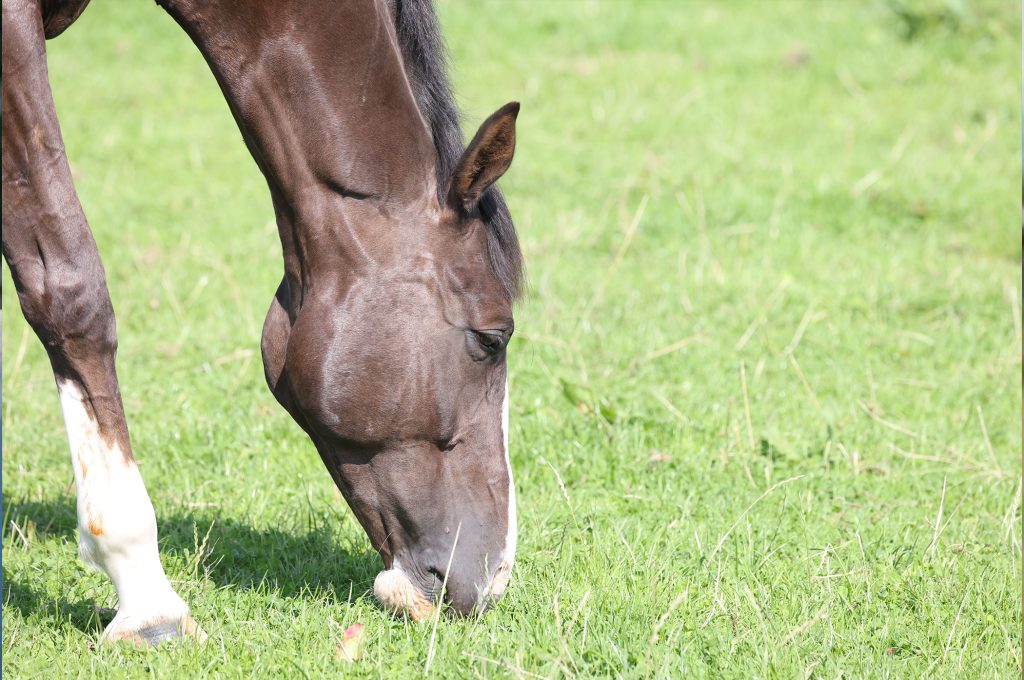We’ve all been enjoying the recent hot spell after a lingering, cold and wet spring.  While summer can bring differing issues for horse owners, from flies and hard ground to summer allergies, the main concern for many is lush grass, an abundance of sugar and the associated risk of laminitis that this can bring. After weeks of hot, dry weather the grass is likely to now shoot away due to the recent, welcomed downpours in the last few days and even more careful management of those equines diagnosed with Cushings, EMS or who are laminitis prone will be key to keeping them healthy.
While summer can bring differing issues for horse owners, from flies and hard ground to summer allergies, the main concern for many is lush grass, an abundance of sugar and the associated risk of laminitis that this can bring. After weeks of hot, dry weather the grass is likely to now shoot away due to the recent, welcomed downpours in the last few days and even more careful management of those equines diagnosed with Cushings, EMS or who are laminitis prone will be key to keeping them healthy.
Sugar is an emotive subject, especially for us as horse owners, but we shouldn’t be scared of it, instead, try looking into the products in a bit more detail to find out what is important, and what they contribute to the diet in a real-life situation. Remember, that in healthy, exercised horses, sugar shouldn’t cause a problem, however there are some horses and ponies that do need a low sugar (not sugar free) diet, particularly those prone to laminitis or suffering from Cushing’s disease or EMS.
As grass and other forages should be the largest proportion of most equine’s diets, then avoiding sugar completely is nigh on impossible. Horses are designed to be able to digest sugar and sugar free feeds will be virtually impossible to find as most of the raw materials are plant based, these will all contain some level of natural sugar.
 When the grass is growing, as it will be now for many, it will have a high sugar content, and contribute a significant amount of sugar to the diet. At present you may find it useful to restrict the grazing of your horse or pony in different ways. This can include using a muzzle while in the field or a track system. The benefits of this are that the horse is kept moving, rather than restricted movement that you find while stabled or if put onto hard standing for a period of time. For many stabling for part of the day and using a low sugar forage is their preferred option, and it’s important to say that there is not one correct option, rather a variety of tools which you can use dependent on your situation to help reduce the sugar intake overall. Increasing workload will also benefit if this is an option, you can always look to lunge or ride and lead if time is an issue.
When the grass is growing, as it will be now for many, it will have a high sugar content, and contribute a significant amount of sugar to the diet. At present you may find it useful to restrict the grazing of your horse or pony in different ways. This can include using a muzzle while in the field or a track system. The benefits of this are that the horse is kept moving, rather than restricted movement that you find while stabled or if put onto hard standing for a period of time. For many stabling for part of the day and using a low sugar forage is their preferred option, and it’s important to say that there is not one correct option, rather a variety of tools which you can use dependent on your situation to help reduce the sugar intake overall. Increasing workload will also benefit if this is an option, you can always look to lunge or ride and lead if time is an issue.
It’s important to consider feeding rates when looking at the percentage content of sugar. The highest![]() percentage sugar content doesn’t always contribute the most sugar to the diet when fed at recommended rates! When fed at recommended rates, Horslyx Balancers will only contribute 82.5g of sugar to a 500kg horse when fed at recommended rates, despite having 33% sugar content. This is because the feeding rate is only 250g per day. If you look at the feeding rate of a low sugar, complete fibre feed, you need to feed 2.5kg per day, so even with a 5% sugar content a 500kg horse would receive 125g of sugar from that product every day. You can read about the views of Jennifer Little from Equinutrition in regard to a safe sugar and starch intake here.
percentage sugar content doesn’t always contribute the most sugar to the diet when fed at recommended rates! When fed at recommended rates, Horslyx Balancers will only contribute 82.5g of sugar to a 500kg horse when fed at recommended rates, despite having 33% sugar content. This is because the feeding rate is only 250g per day. If you look at the feeding rate of a low sugar, complete fibre feed, you need to feed 2.5kg per day, so even with a 5% sugar content a 500kg horse would receive 125g of sugar from that product every day. You can read about the views of Jennifer Little from Equinutrition in regard to a safe sugar and starch intake here.
Horslyx is often viewed as a high sugar product, but when recommended intakes are followed, it provides a relatively low daily intake.
- Sugar is a natural part of the horse’s diet and horses are highly efficient at digesting it, when the intakes are little and often.
- Due to the trickle feeding pattern of Horslyx Balancers, the intake of sugar is little and often over the day. Licking takes time and patience!
- In this way the low sugar intake is easily absorbed in the small intestine, so it doesn’t reach the hind gut.
- A 250 g daily allowance of Horslyx will provide 82.5 g sugar per day. Surprisingly, this is less sugar than you would find in 1kg of good hay!
- Remember, if a horse or pony is on restricted rations of forage, we recommend restricted access to Horslyx. A hungry pony is a greedy pony!
The Horslyx range are Balancers in a tub, designed specifically to balance the deficiencies in forage and grazing. A Horslyx Balancer plus forage results in a balanced diet which provides all the nutrients and sufficient energy for many horses and ponies. When introduced and fed correctly, Horslyx Balancers offer a safe method of ensuring all horses and ponies receive the necessary nutrients they require. Find out more at www.horslyx.com.


